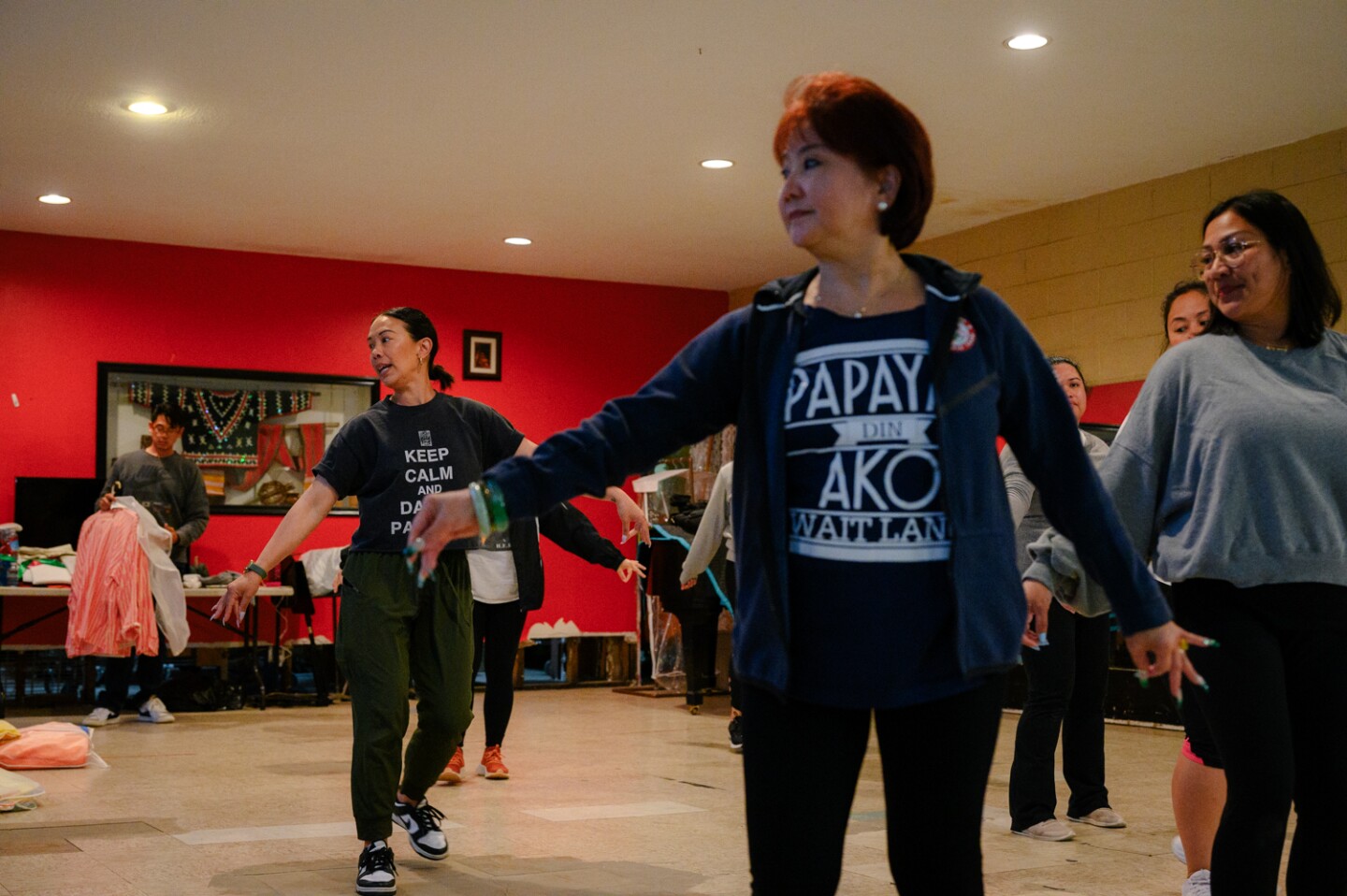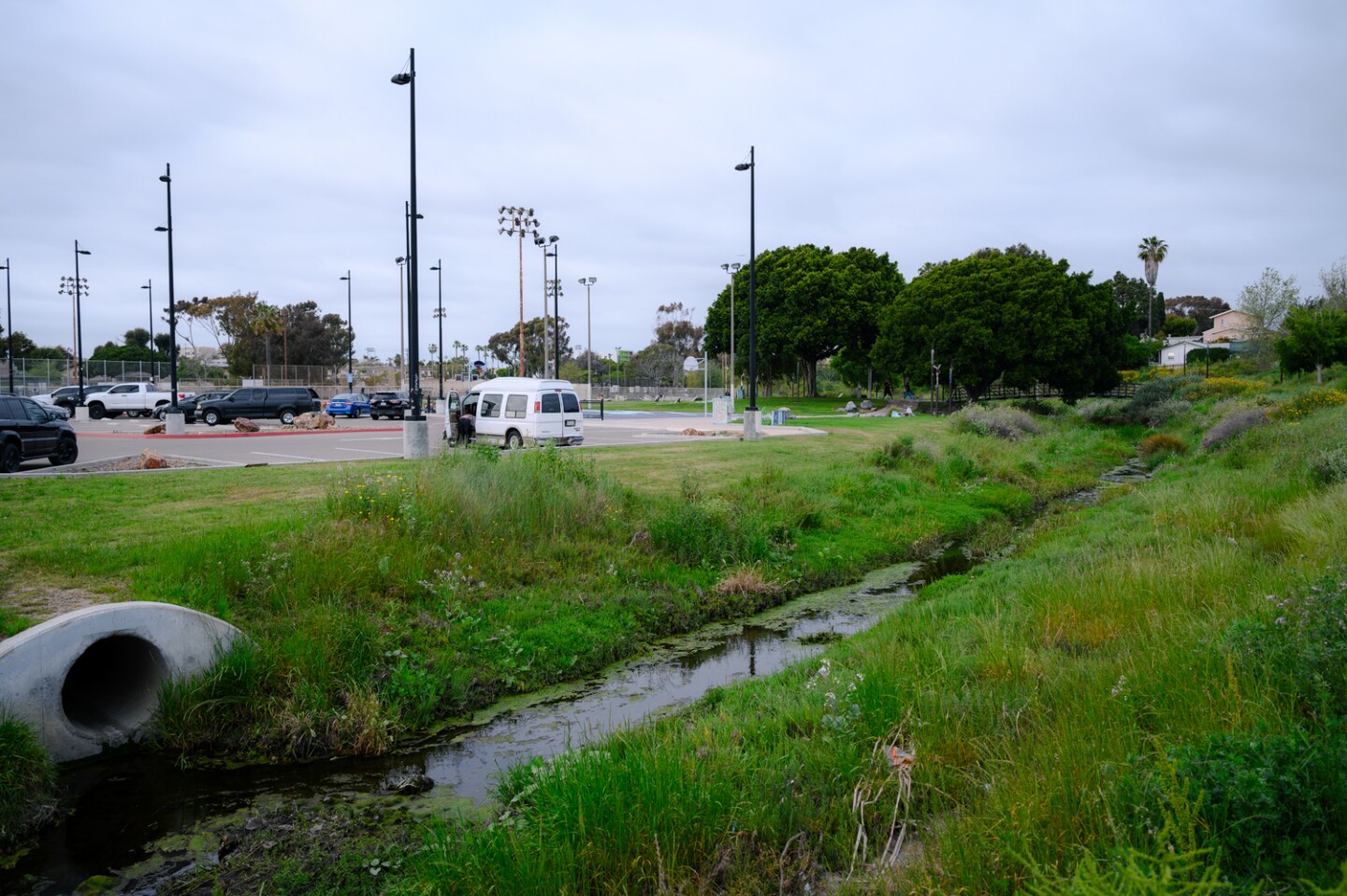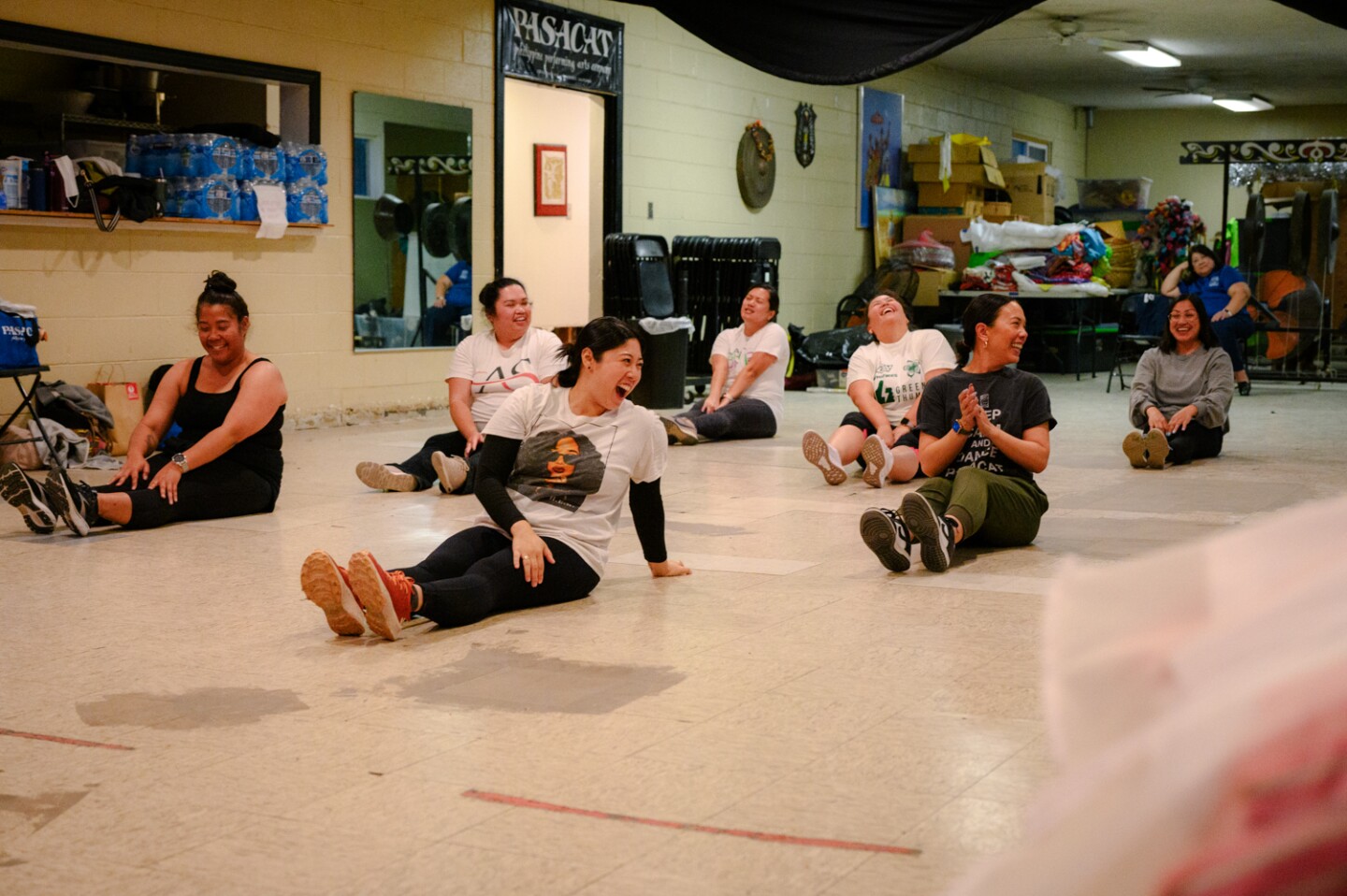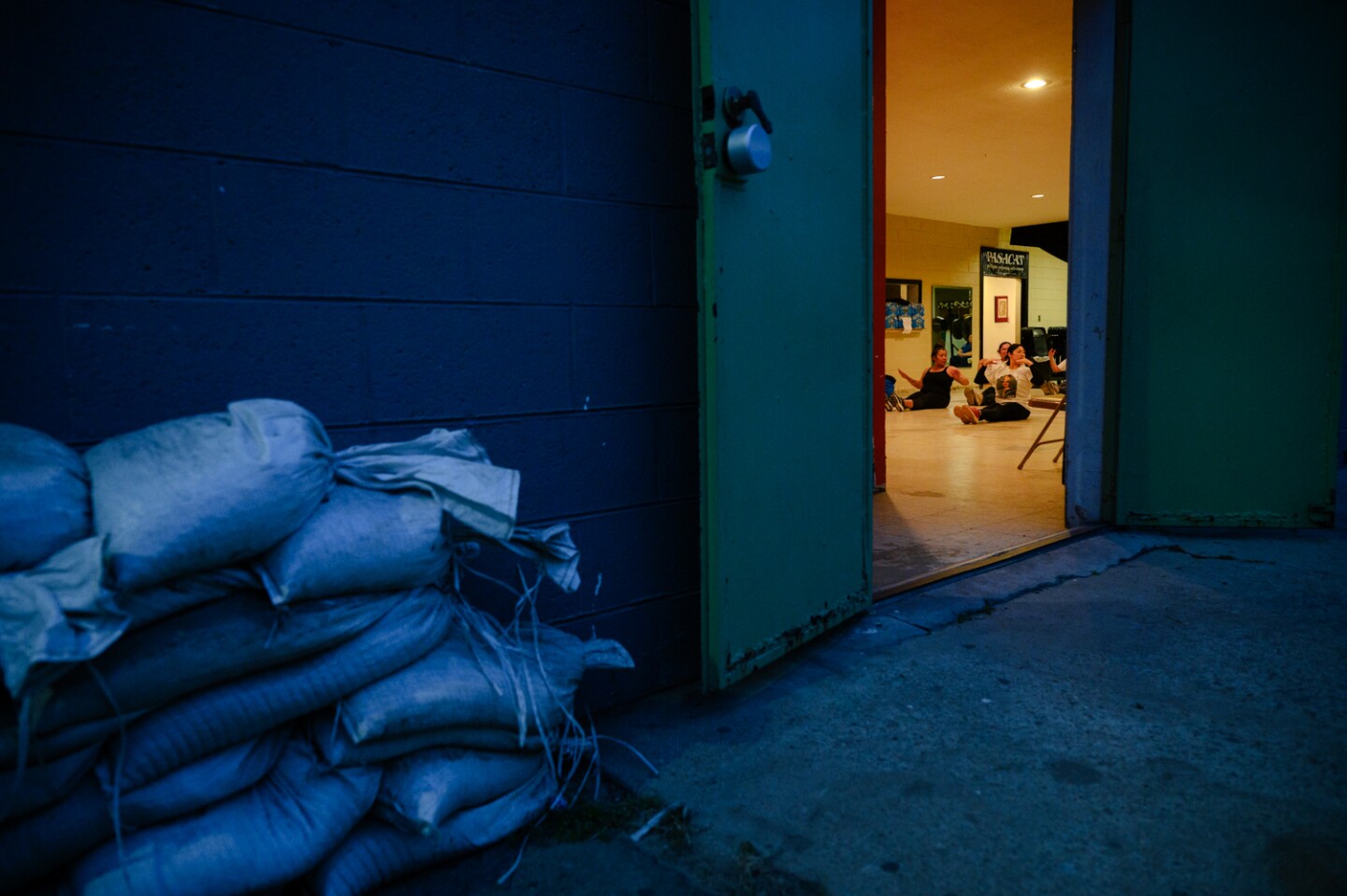One of the San Diego region’s oldest Philippine performing arts companies has been debating whether to sell their studios in National City after flood waters ruined the building again this year.
PASACAT has faced four destructive floods since 2014, leading the organization’s board to ask whether it would be worth it to rebuild their longtime headquarters again or whether they should look to sell the building and begin the search for a new home.
But after consulting with the greater PASACAT community, leaders say their current goal is to stay. They plan to reinforce the building to better withstand future floods.
“We knew that we had to do something beyond just fixing it,” said Anamaria Labao Cabato, the company’s executive director.
From its early days, PASACAT’s headquarters was a studio — a small, 700-square-foot building in the center of National City. The building was originally owned by Veterans of Foreign Wars. PASACAT took it over in the 1970s, soon after the organization was founded.
Owning a studio space is not typical for small arts companies in general, and board members said it is particularly rare for Philippine arts organizations.
Over the decades, PASACAT fostered generations of performing artists and grew to include multiple dance companies and musical ensembles specializing in the string instrument Rondalla, indigenous percussion instruments and Harana singing.
Then the floods began in December 2014. A second flood happened two years later, followed by a third in 2019.


In each case, board members said the PASACAT community stepped in by raising funds and volunteered to help with construction. Still, the process of assessing the damage, raising funds and beginning repairs to the building became a heartbreakingly familiar pattern.
And in January, another devastating storm arrived. Murky water swept through National City and seeped through the walls of the PASACAT center, soaking the building’s dance floor and ruining decades-old costumes, headdresses, instruments and props.
For Labao Cabato and other board members, it felt like a watershed moment.
“We had an emergency meeting on the day after, and they were fed up,” she said. “I can't ask people to help when this has happened before. How are they going to give money to this a fourth time?”
The choice of whether to stay or go in the face of climate disasters, is one that many communities across the country are facing now. Global carbon emissions continue to rise, triggering fiercer and more frequent floods and wildfires. At least one study has already linked climate change with the ferocity of January’s floods in San Diego.
Experts said communities of color, low-income Americans and others living with structural disadvantages often face some of the most wrenching decisions.
For PASACAT, choosing to go would mean giving up its longtime headquarters, and maybe even leaving South Bay altogether. But deciding to stay would likely mean facing down more floods in the future. The building sits right in the middle of a high flood risk zone.
In February, the board held a town hall to consult with the greater PASACAT community. Most attendees said they thought the organization should keep the building. But many also argued that it would not be enough to simply repair the damage again.
“We can’t just put a band-aid on it and hope, because hope is not a plan,” said PASACAT Board President Mike Estela at the meeting. “We need to address the problem and come up with a clear path forward.”


Labao Cabato still has some worries about their ultimate decision to stay. The board has applied for a federal disaster loan, which would help fund their planned renovations. But if the company isn’t approved for that funding, she said she’s not sure what the path forward will look like.
Still, part of her is also glad that they’re planning to keep the studio — a building that’s been with the company for more than 50 years and that her father helped repair in the 1990s.
“He was, back then, probably in his 70s,” Labao Cabato said, laughing. “But that's how much they loved what we were doing. They did it in sacrifice for the young people that we were changing lives of.”





